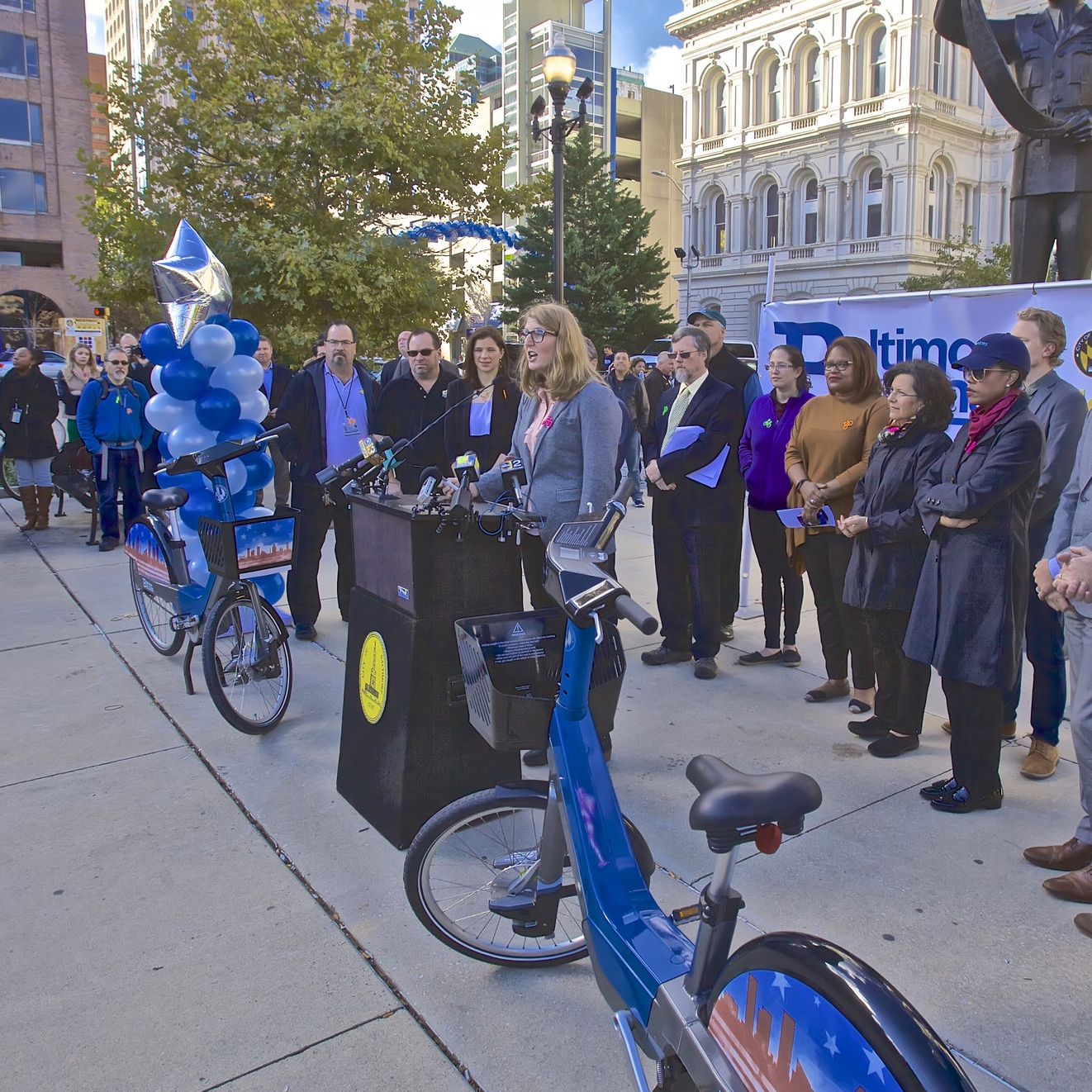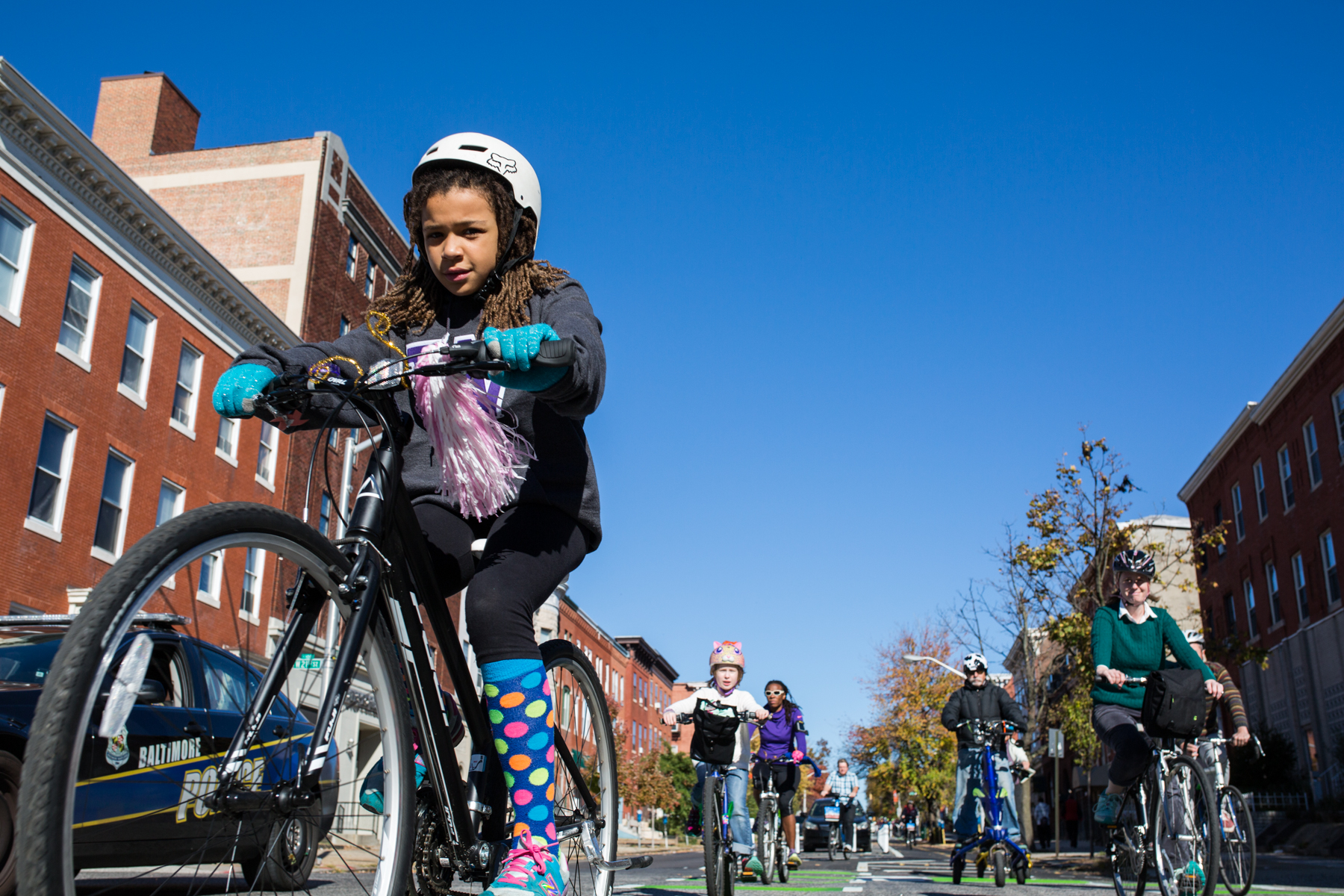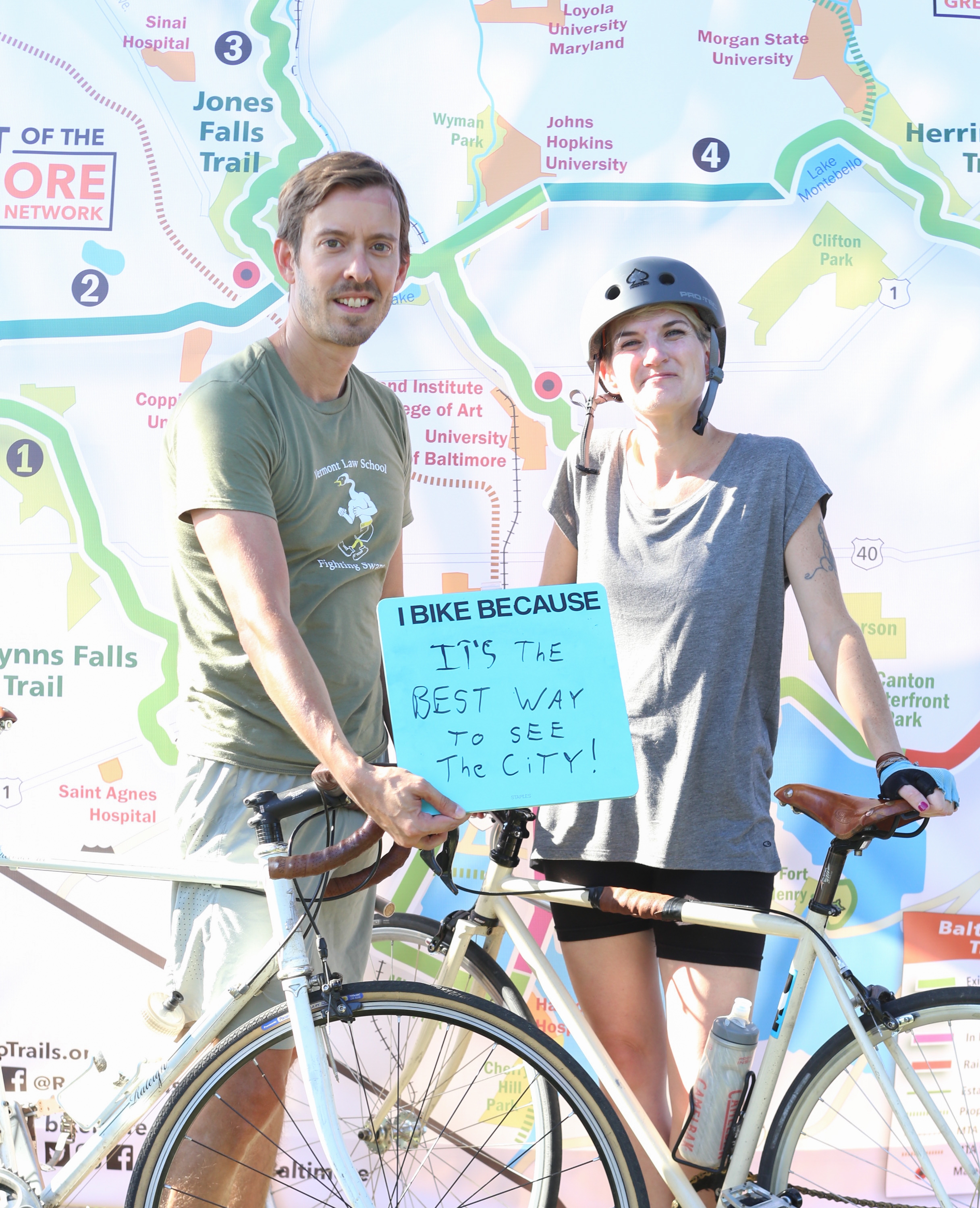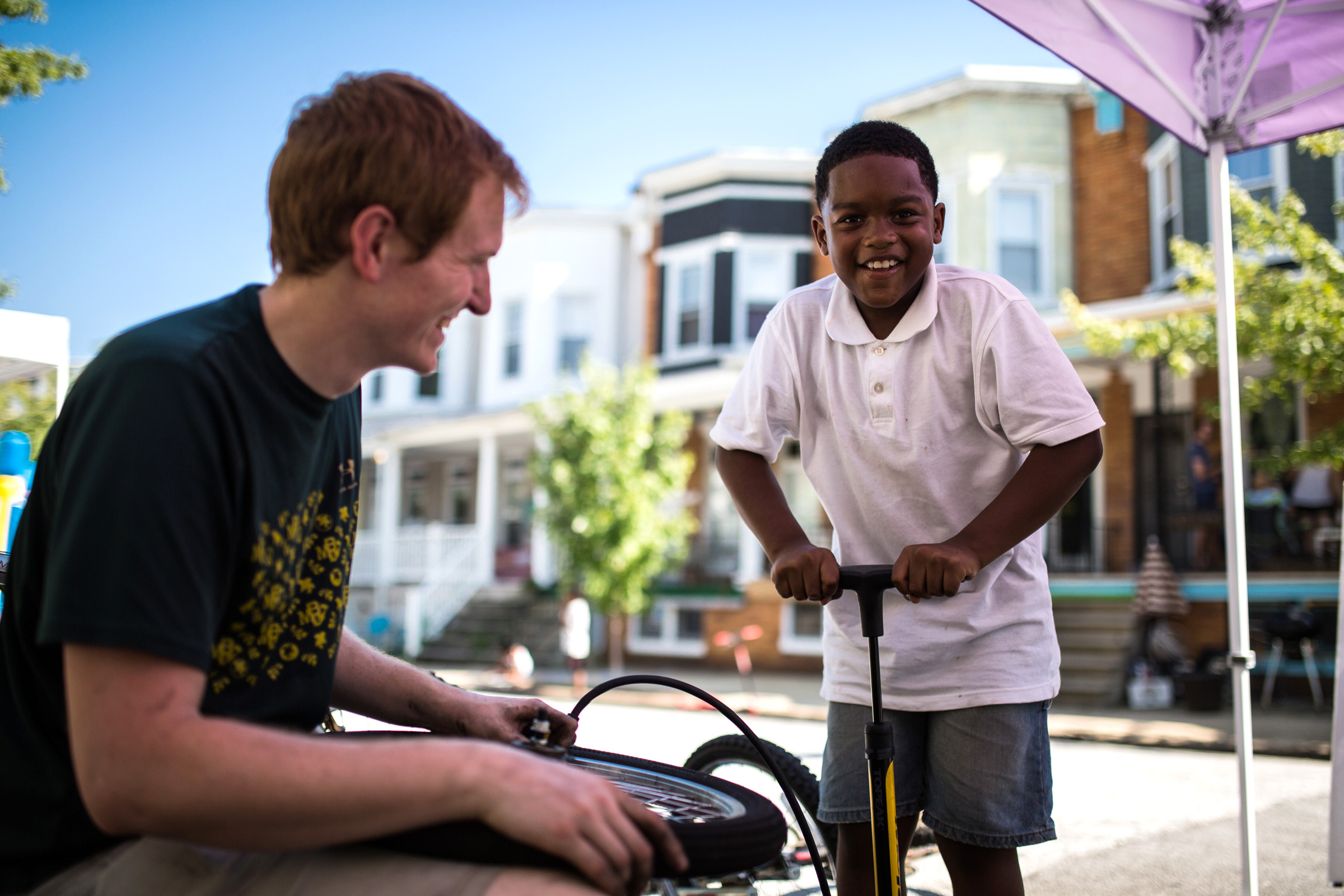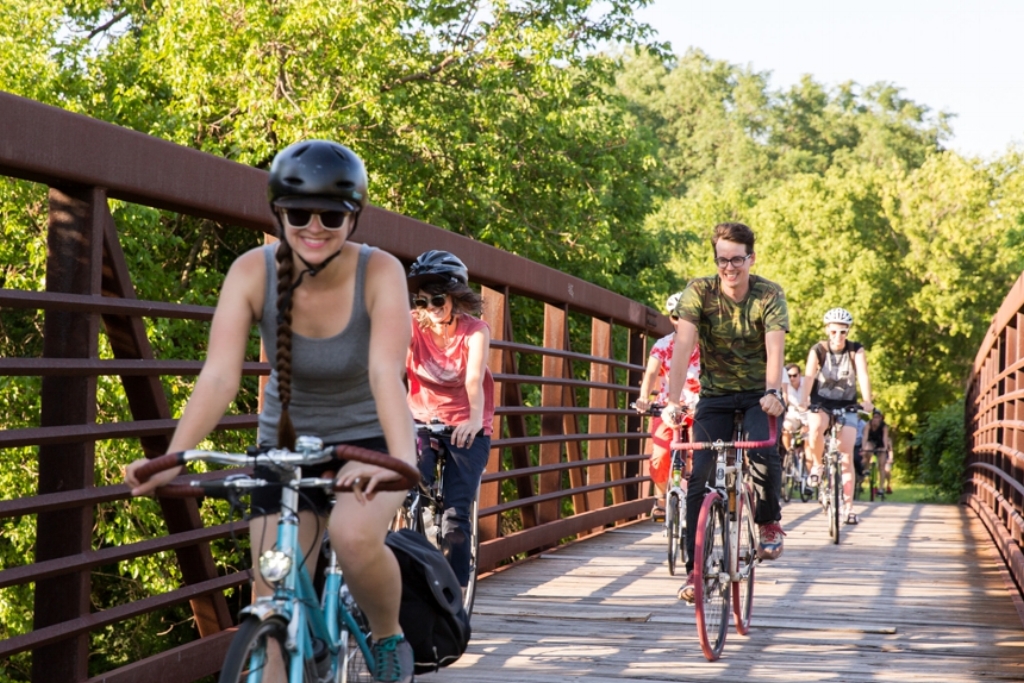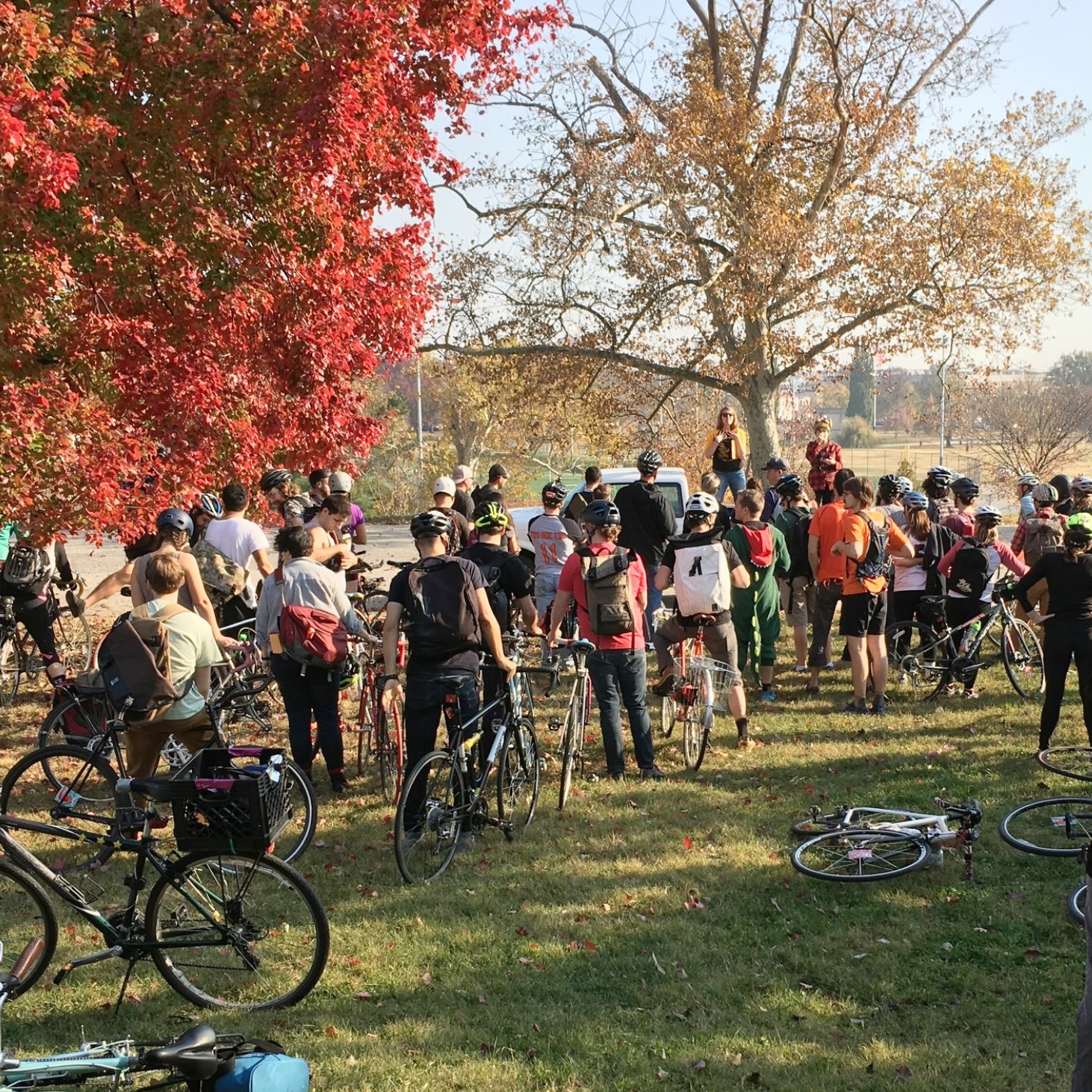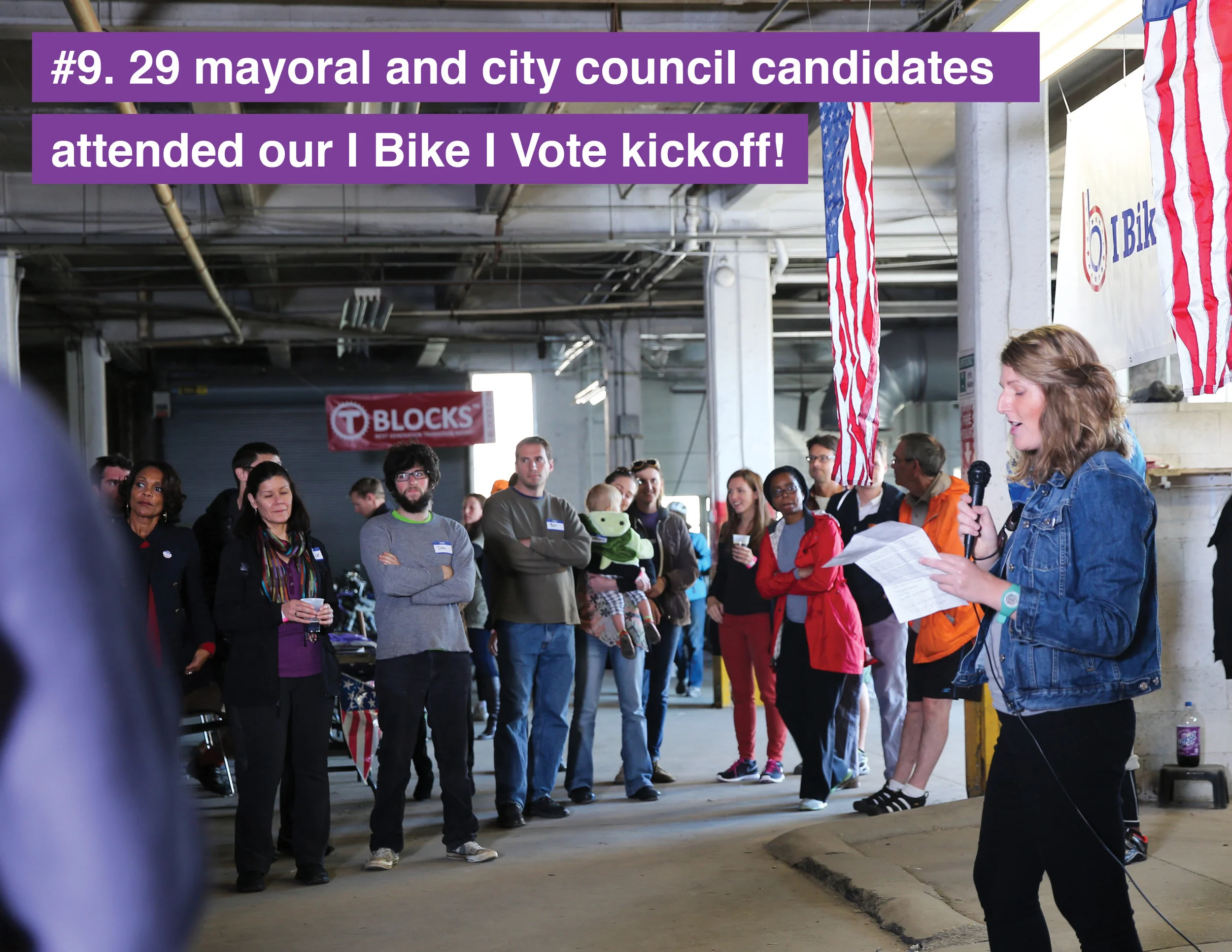This is the first in a series of posts highlighting present—and flawed—planning priorities in Baltimore City.
According to the Harvard-based Equality of Opportunity Project, every year a child spends growing up in Baltimore City lowers their household income by .86%. This means that by adulthood, a child who grows up in Baltimore City faces a likely earnings deficit of 17% compared to the national average.
We know from the same study that access to transportation—specifically commute times—are the #1 factor in upward mobility.
Armed with this information, cities across the country have been investing in bicycling, walking, and public transportation options that provide safe, reliable, and efficient access to jobs and opportunity for city residents.
Despite incremental improvements like launching bike share and the construction of the Downtown Bike Network, Baltimore has yet to make the level of investment necessary that could truly transform how people travel inside the city. 33% of Baltimore City residents lack access to a car. That number climbs to almost 80% in East, West, and North Central Baltimore. Despite these figures, Baltimore has historically invested in promoting automobile throughput for county commuters at the expense of city residents, disproportionately, and at times deliberately, damaging communities of color.
As a result, it's often easier for a resident of Baltimore County to drive to work in Baltimore City than it is for a city resident to get to that same job by walking, biking, or taking public transit. This reinforces Baltimore's segregationist, racist history.
Unlike many other seemingly intractable problems Baltimore faces, this one has an easy fix: it simply requires the political will to stop spending money on wasteful road projects that benefit county commuters over city residents.
Let's take the Southeast Strategic Transportation Vision as an example. This study began in coordination with the Red Line to address transportation challenges in Southeast Baltimore. When Governor Hogan canceled the Red Line, Baltimore City Department of Transportation was tasked with updating the study to offset the loss of a rail transit line.
The result can be seen in the screen captures of the plan above. Between June 2015 (left) and present (right), a $150 million viaduct around the railroad tracks on Boston Street and a $50 million widening of less than one mile of Boston Street were added to the plan.
Let's map that out.
Here's what $50 million spent on less than a mile of road widening looks like:
Here's what $50 million spent on protected bike infrastructure for Baltimore City residents could look like:
Here's what $150 million spent on a viaduct around the Boston Street railroad tracks looks like:
And here's what that same $150 million spent on providing high quality, dedicated bus lanes for the proposed CityLink frequent bus network could look like:
This isn't a joke. A $200 million investment could build paint dedicated lanes for our entire frequent bus network, build our entire bike network envisioned in the bike master plan, and provide bike share for every neighborhood in Baltimore City. Or, it could build one mile of new, expanded roadway.
The latter is slated to become official transportation policy with the passage of the Southeast Strategic Transportation Vision.
We can change these priorities. We're making progress.
Bikemore's #ibikeivote campaign brought transportation to the forefront of political campaigns for city council and mayor, and prompted discussion about equity in transportation funding. We are partnering with Councilman Ryan Dorsey on passing stronger, equity focused complete streets legislation that will make proposals and decisions to fund roadway expansion at the expense of other transportation options much more difficult. And Mayor Catherine Pugh and her team are seeking a new Director of Transportation with a background in complete streets and livable cities.
But citywide, from our elected officials to our planners to our residents, we must finally recognize that people who drive into Baltimore from the counties are not the saviors of our city, but providing safe, convenient ways to walk, bike, and take reliable public transportation can be.
→ Be sure you're subscribed to our email list for an upcoming update on how you can support Complete Streets in Baltimore!










